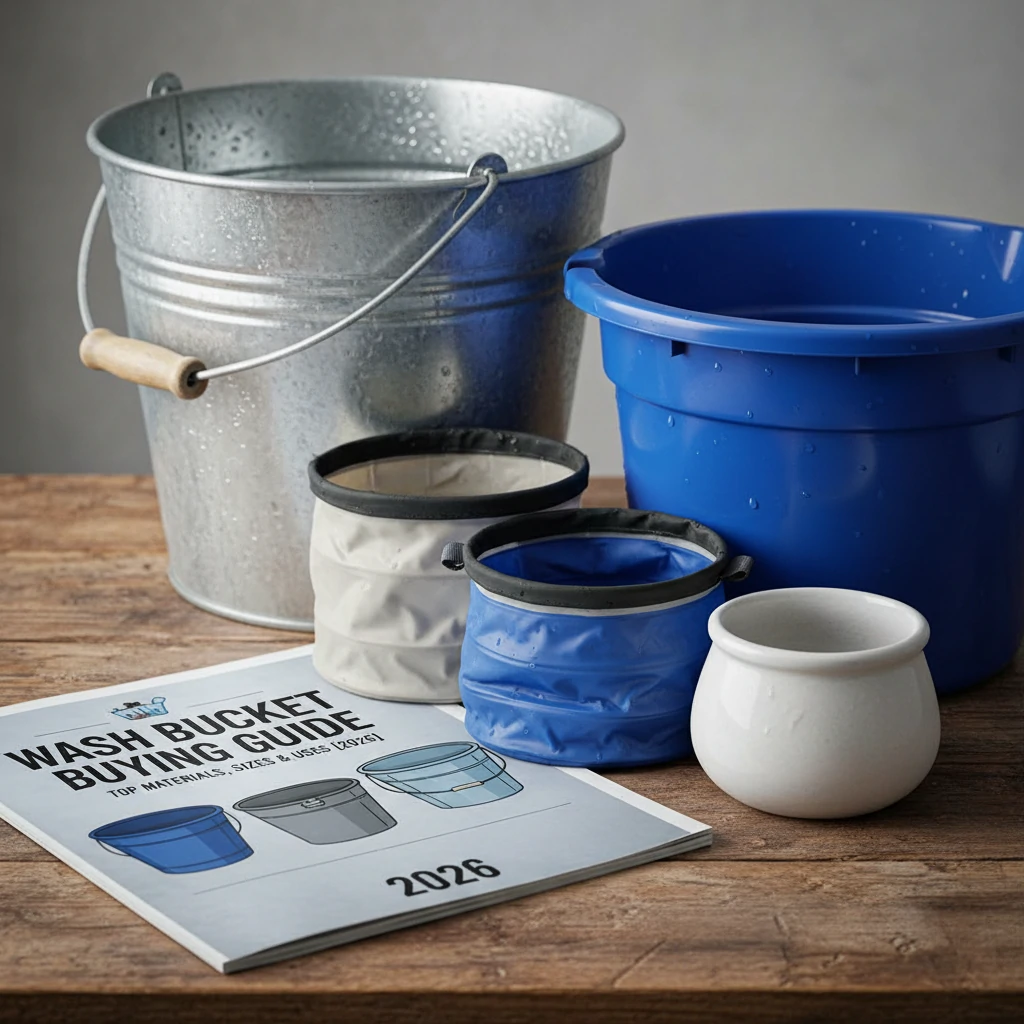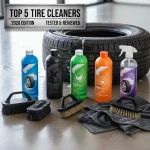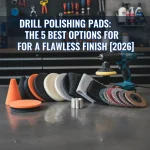[Get the best value wash bucket on Amazon today!]
# Wash Bucket Buying Guide: Top Materials, Sizes & Uses [2026]
Are you tired of lugging around heavy, awkward containers when you need to wash your car, mop the floor, or tackle other cleaning tasks? A good wash bucket is an essential tool for any home, garage, or worksite. But with so many options available, choosing the right one can be overwhelming.
This comprehensive guide will walk you through everything you need to know to find the perfect wash bucket for your needs. We’ll cover the top materials, sizes, and uses, ensuring you make an informed decision and get the most out of your purchase. Let’s dive in!
[Browse top-rated wash bucket on Amazon]
## Top Wash Bucket Materials: Which is Best for You?
The material of your wash bucket significantly impacts its durability, weight, and suitability for different tasks. Here’s a breakdown of the most common options:
* **Plastic:** Plastic wash buckets are the most common and affordable option.
* **Pros:** Lightweight, durable, rust-proof, and available in various colors and sizes. Easy to clean and resistant to most chemicals.
* **Cons:** Can become brittle and crack over time, especially with exposure to extreme temperatures or harsh chemicals. Some plastics may stain or absorb odors. Not always the most environmentally friendly option.
* **Metal (Galvanized Steel):** Metal wash buckets, often made of galvanized steel, offer superior durability and resistance to wear and tear.
* **Pros:** Extremely durable and long-lasting. Resistant to rust (when galvanized) and can withstand heavy use. Suitable for a wide range of tasks, including those involving harsh chemicals or abrasive materials.
* **Cons:** Heavier than plastic buckets. Can rust if the galvanized coating is damaged. May be more expensive than plastic options.
* **Silicone (Collapsible):** Silicone wash buckets are a relatively new innovation, offering the benefit of being collapsible for easy storage.
* **Pros:** Space-saving design. Lightweight and easy to carry. Durable and resistant to cracking or breaking. Often heat-resistant.
* **Cons:** May not be as sturdy as plastic or metal buckets when fully expanded. Can be more expensive than traditional plastic buckets. Limited size options.
* **Rubber:** Rubber wash buckets are known for their flexibility and resistance to impact.
* **Pros:** Highly durable and resistant to cracking or breaking, even in cold temperatures. Flexible and easy to pour from. Often features a non-slip base.
* **Cons:** Can be heavier than plastic buckets. May be more expensive than plastic options. Can sometimes retain odors.
[Browse top-rated wash bucket on Amazon]
## Finding the Perfect Wash Bucket Size
Choosing the right size wash bucket depends on the tasks you’ll be using it for. Here’s a guide to common sizes and their typical applications:
* **1-2 Gallon Buckets:** Ideal for small tasks like washing windows, cleaning small spills, or watering plants. Easy to carry and maneuver.
* **3-5 Gallon Buckets:** The most versatile size for general household cleaning, car washing, and gardening. Large enough to hold a sufficient amount of water but still manageable to carry.
* **6-8 Gallon Buckets:** Suitable for larger cleaning projects, such as mopping floors, washing large vehicles, or mixing concrete. Requires more strength to carry when full.
* **10+ Gallon Buckets:** Primarily used for industrial or commercial applications, such as construction, agriculture, or professional cleaning services. Very heavy and difficult to maneuver when full.
Consider the following when determining the right size for you:
* **The types of tasks you’ll be performing:** Larger tasks require larger buckets.
* **Your physical strength:** Can you comfortably carry a full bucket of the desired size?
* **Storage space:** Do you have enough room to store the bucket when it’s not in use?
* **Water source:** Is it easy to refill the bucket as needed?
[Browse top-rated wash bucket on Amazon]
## Wash Bucket Uses: From Cleaning to Construction
Wash buckets are incredibly versatile tools with a wide range of applications. Here are some of the most common uses:
* **Household Cleaning:** Mopping floors, washing windows, cleaning bathrooms, and general tidying. A 3-5 gallon plastic bucket is typically sufficient for most household cleaning tasks.
* **Car Washing:** Washing the exterior of your car, cleaning wheels, and rinsing off soap. A 5-gallon bucket is a good size for car washing, providing enough water to thoroughly clean your vehicle. Consider using two buckets – one for soapy water and one for rinsing – to prevent dirt from scratching the paint.
* **Gardening:** Watering plants, mixing fertilizers, and transporting soil or mulch. A 2-gallon bucket is ideal for watering individual plants, while a larger bucket can be used for mixing larger quantities of fertilizer or transporting materials.
* **Construction:** Mixing concrete, carrying tools, and cleaning up debris. A heavy-duty metal or rubber bucket is best suited for construction tasks due to its durability and resistance to wear and tear.
* **Pet Care:** Bathing pets, cleaning up accidents, and providing water. A plastic bucket is a good choice for pet care, as it’s easy to clean and disinfect.
* **Food Storage (Food Grade Buckets Only):** Storing dry goods, such as grains, beans, or pet food. Ensure the bucket is specifically labeled as “food grade” to prevent contamination.
* **Emergency Preparedness:** Storing water for drinking and sanitation in case of emergencies. Keep a supply of clean, food-grade buckets on hand for emergency water storage.
[Browse top-rated wash bucket on Amazon]
## Key Features to Look for in a Wash Bucket
When shopping for a wash bucket, consider these key features:
* **Durable Construction:** Choose a bucket made from high-quality materials that can withstand regular use and exposure to various conditions.
* **Comfortable Handle:** Look for a bucket with a sturdy, ergonomic handle that’s comfortable to grip and carry, even when the bucket is full.
* **Pouring Spout:** A pouring spout makes it easier to pour liquids without spilling.
* **Measurement Markings:** Some buckets have measurement markings on the inside, which can be helpful for accurately measuring liquids or mixing solutions.
* **Grit Guard Compatibility:** If you plan to use the bucket for car washing, consider a bucket that’s compatible with a grit guard. A grit guard is a plastic insert that sits at the bottom of the bucket and prevents dirt and debris from being stirred up when you rinse your wash mitt.
* **Stackable Design:** If you need to store multiple buckets, look for a stackable design to save space.
* **Non-Slip Base:** A non-slip base helps to prevent the bucket from sliding or tipping over, especially on smooth surfaces.
[Browse top-rated wash bucket on Amazon]
## Recommended Wash Buckets for 2026
Here are a few of our top picks for wash buckets in 2026, based on material, size, and intended use:
* **Best Overall:** **Amazon Basics 5-Gallon Multi-Purpose Bucket:** A durable and affordable plastic bucket that’s perfect for a wide range of tasks. Features a comfortable handle and measurement markings.
* **Best for Car Washing:** **Chemical Guys Heavy Duty Detailing Bucket:** A 5-gallon bucket designed specifically for car washing. Compatible with grit guards and features a durable construction.
* **Best Collapsible Bucket:** **HOMWE Collapsible Bucket:** A space-saving silicone bucket that’s perfect for camping, RVing, or small apartments.
* **Best Heavy-Duty Bucket:** **Behrens Manufacturing 6-Gallon Steel Pail:** A durable galvanized steel bucket that’s built to last. Ideal for construction, gardening, and other heavy-duty tasks.
* **Best Rubber Bucket:** **Little Giant RB90 Rubber Bucket:** A flexible and durable rubber bucket that’s resistant to cracking and breaking. Features a non-slip base and a comfortable handle.
*Note: As an Amazon Associate I earn from qualifying purchases.*
[Browse top-rated wash bucket on Amazon]
## Pro Tips for Wash Bucket Use and Maintenance
* **Clean your wash bucket regularly:** Rinse out the bucket after each use to prevent the buildup of dirt and grime.
* **Use separate buckets for different tasks:** Avoid using the same bucket for cleaning chemicals and food storage.
* **Store your wash bucket in a dry place:** This will help to prevent rust and mildew.
* **Don’t overfill the bucket:** Overfilling can make the bucket difficult to carry and increase the risk of spills.
* **Use a grit guard when washing your car:** This will help to prevent dirt from scratching your car’s paint.
* **Consider using a bucket dolly:** A bucket dolly is a wheeled platform that makes it easier to move heavy buckets around.
[Browse top-rated wash bucket on Amazon]
## FAQ About Wash Buckets
* **What is the best material for a wash bucket?** The best material depends on your needs. Plastic is the most common and affordable option, while metal is more durable and rubber is more flexible.
* **What size wash bucket should I get?** A 3-5 gallon bucket is a good all-purpose size for most household tasks.
* **Can I use a wash bucket for food storage?** Only if the bucket is specifically labeled as “food grade.”
* **How do I clean a wash bucket?** Rinse it out with water and soap after each use. For stubborn stains, use a scrub brush and a mild cleaning solution.
* **How do I prevent my wash bucket from rusting?** Store it in a dry
[Check the latest prices and deals for wash bucket on Amazon today!]











